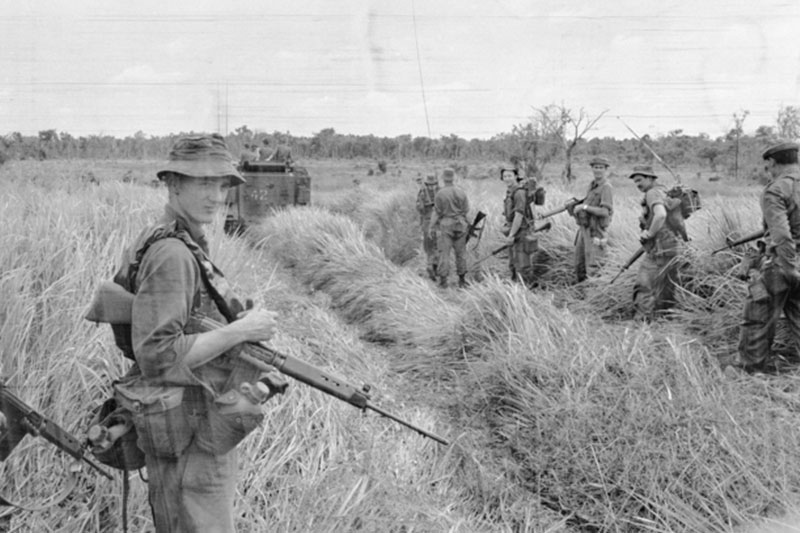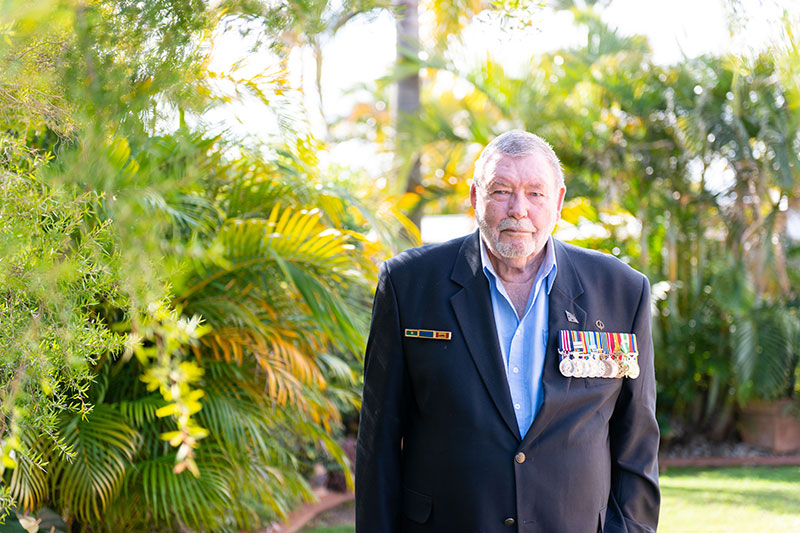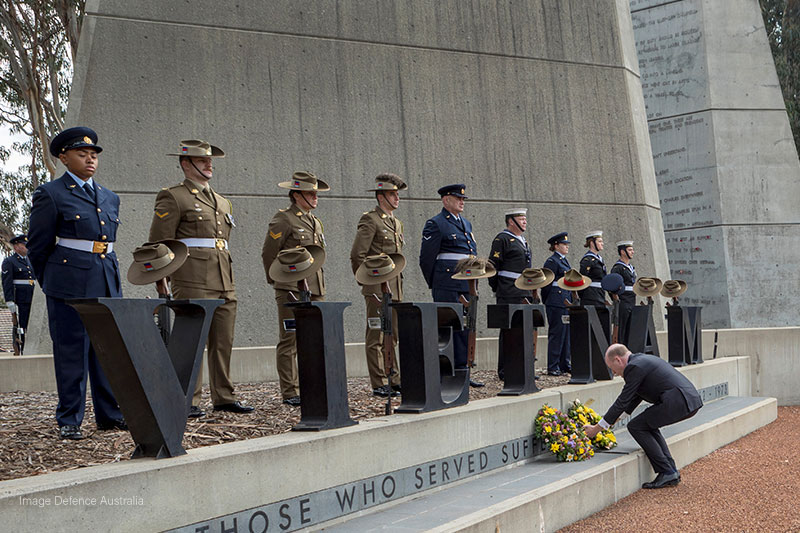31 July 2025
How The Vietnam War and Battle of Long Tan Shaped Us
Vietnam Veterans’ Day on 18 August is a day to not only honour the sacrifices made, but to continue taking steps to heal and reconnect with comrades.
And while Vietnam Veterans’ Day has not always had the profile of some other military commemorations, as a community we’re working to ensure the day holds its rightful place in our calendar and continues educating about the contribution these veterans made to our country’s history.
Vietnam Veterans’ Day also marks the anniversary of the Battle of Long Tan – one of the most significant conflicts for Australian service personnel who fought in the Vietnam War.
More than 60,000 Australian Army, Air Force, and Navy personnel served in Vietnam from 1962 until January 1973, when our Governor-General called for their formal withdrawal. Additional RAAF personnel returned in 1975 to carry out evacuations and assist refugees in the lead-up to South Vietnam's surrender.
Every year, RSL Queensland remembers the sacrifices made – including 523 who died and more than 3,000 who were evacuated with wounds, injuries or illness – during Australia’s decade-long involvement in the Vietnam War.
Australia and the Vietnam War
The Vietnam War (1955-75) pitted South Vietnam against communist North Vietnam, and their respective allies. It was the longest 20th century conflict that involved our nation.
Australia joined the war effort following the South Vietnam government’s requests for assistance from allies. Australia initially sent 30 military advisers, known as the Australian Army Training Team Vietnam (AATTV), in 1962. A RAAF flight of Caribou transports followed in 1964.
Image - Australian War Memorial - 6RAR soldiers in Phuoc Tuy, South Vietnam
In early 1965, Australia increased its presence in Vietnam, dispatching the 1st Battalion, Royal Australian Regiment (1RAR) in June who served alongside the US. Additional troops were dispatched in 1966 to Nui Dat, Phuoc Tuy province, and included troops who were conscripted as part of the National Service Scheme, which had been introduced in 1964. The scheme saw 8,500 troops conscripted to the efforts at the peak of Australian involvement in Vietnam.
Ever-present danger
The terrain, conditions, and combat tactics in Vietnam posed constant challenges for Australian forces, who fought in intense tropical heat and torrential monsoon rain.
Infantry; members of the armoured, artillery and engineer corps; helicopter crews; and forward air controllers frequently faced close combat or intense enemy fire.
Dense vegetation and vast rubber plantations concealed the enemy while exposing soldiers to attack, and landmines and booby traps created lethal hidden obstacles.
The constant, nerve-wracking cycle of patrolling, laying ambushes and pursuing the enemy took a traumatic toll on many who served. Many would also suffer health effects after exposure to herbicides and pesticides in Vietnam.
Source: Department of Veterans’ Affairs (DVA) (2023)
The Battle of Long Tan
Four years after our forces landed in Vietnam came a defining moment in Australia’s war efforts: the Battle of Long Tan.
On 18 August 1966, a total of 105 soldiers of Delta (D) Company – a company of 6RAR – and three men of 161 Field Battery, Royal New Zealand Artillery, held off enemy forces for more than three hours in a tropical downpour.
The Australians and New Zealanders were outnumbered by at least 10 to one.
Some 30 minutes into the battle, Platoon Commander Lieutenant Gordon Sharp was killed, and Sergeant Bob Buick assumed command of 11 Platoon.
“You’re trained to do a certain job, and sergeants are trained to take over from the platoon commander if anything happens. I knew what I had to do,” Bob says.
“I had to control artillery for an hour to bring it right in and straight over the top of our heads, to land 50 metres away. Because we had 70 or 80 enemies right in front of us and they were shooting us very effectively.
SGT Robert (Bob) Buick (Retd), 6RAR
“I went out with 29 soldiers and there were only eight of us left the next morning; 13 were killed and eight were wounded.”
The surviving members of 11 Platoon were eventually able to regroup with 12 Platoon, and the rest of D Company. D Company defended its position against relentless attacks by the North Vietnamese, until the enemy was repelled by the arrival of B Company and 3 Troop, 1st Armoured Personnel Carrier Squadron (1 APC Sqn).
Seventeen Australians were killed in action and a further 25 were injured; one of them died nine days later. This made the Battle of Long Tan the costliest single engagement for Australia during the Vietnam War.
The average age of the fallen was just 21 years.
Sources: Australian War Memorial (2023), Department of Veterans’ Affairs (DVA) (2020)
A day of commemoration emerges
Three years after the short but poignant battle, a cross was raised by the men of 6RAR on the site of the Battle of Long Tan. The anniversary of 18 August became known as Long Tan Day, and was marked by veterans as a day to commemorate the fallen.
In time, 18 August was recognised by Australian Vietnam veterans as a day to honour and recognise all those who served and died in Vietnam. It was formally recognised as Vietnam Veterans’ Day in 1987 with then Prime Minister Bob Hawke’s announcement after the Welcome Home parade for Vietnam veterans.
Australia’s involvement in the Vietnam War was a politically and socially divisive issue in the 1960s and 70s. So – unlike WWI and WWII veterans, who were warmly welcomed home – many Vietnam veterans faced hostility upon their return. The 1987 Welcome Home parade marked the start of a long-awaited journey towards public recognition and respect for their service.
Image - Defence Australia - The National Vietnam War Memorial, Canberra
Today, Vietnam Veterans’ Day is a chance for us all to not only acknowledge that service, but to also thank the many Vietnam vets who volunteer their time in Sub Branches and their local communities.
Vietnam Veterans’ Day | Honour those who served
On Vietnam Veterans’ Day (18 August), join us in honouring all Australians who served and sacrificed in the Vietnam War.
Attend an event at your local RSL Sub Branch or tune into a commemorative service.
Lest we forget.




